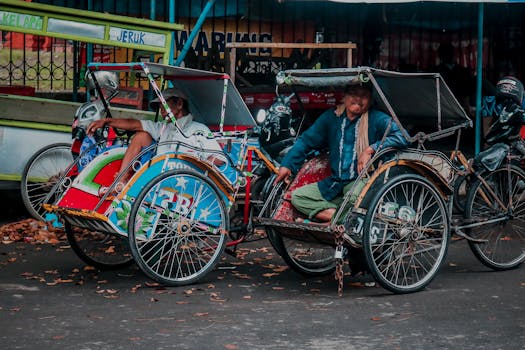Perbandingan Atap Spandek Polymethyl Methacrylate dengan Atap Tradisional adalah topik yang akan dibahas dalam artikel ini.
Polymethyl Methacrylate (PMMA) roofing is gaining popularity as an alternative to traditional roofs. This article will explore the advantages of PMMA roofing compared to traditional roofs.One of the main advantages of PMMA roofing is its durability. Traditional roofs, such as those made of clay tiles or metal sheets, are prone to damage from extreme weather conditions. PMMA roofing, on the other hand, is highly resistant to UV rays, hail, and heavy rain. This makes it a great choice for areas with harsh weather conditions.Another advantage of PMMA roofing is its lightweight nature. Traditional roofs can be heavy and require additional support structures. PMMA roofing, on the other hand, is lightweight and can be installed on a variety of structures without the need for additional reinforcement. This not only saves on construction costs but also makes installation easier and faster.PMMA roofing also offers excellent insulation properties. Traditional roofs can absorb heat, making the interior of a building hot and uncomfortable. PMMA roofing, on the other hand, reflects heat, keeping the interior cool and reducing the need for air conditioning. This can lead to significant energy savings and a more comfortable living or working environment.In addition to its insulation properties, PMMA roofing is also highly resistant to fire. Traditional roofs, especially those made of wood or thatched materials, can easily catch fire and spread it to the rest of the building. PMMA roofing, on the other hand, is fire-resistant and can help prevent the spread of fire. This can provide valuable time for occupants to evacuate and for firefighters to arrive on the scene.PMMA roofing is also known for its aesthetic appeal. Traditional roofs often have a limited range of colors and designs. PMMA roofing, on the other hand, can be customized to match the style and architecture of any building. It is available in a wide range of colors and can even be made to resemble traditional roofing materials, such as clay tiles or shingles. This allows homeowners and architects to create a unique and visually appealing look for their buildings.Maintenance is another area where PMMA roofing shines. Traditional roofs often require regular maintenance, such as cleaning, painting, or replacing damaged tiles or sheets. PMMA roofing, on the other hand, requires minimal maintenance. It is resistant to algae and moss growth, and its smooth surface makes it easy to clean. This not only saves time and effort but also reduces maintenance costs over the long term.In conclusion, PMMA roofing offers several advantages compared to traditional roofs. Its durability, lightweight nature, insulation properties, fire resistance, aesthetic appeal, and low maintenance requirements make it an excellent choice for both residential and commercial buildings. Whether you are looking to replace an existing roof or are planning a new construction project, consider the benefits of PMMA roofing. It can provide a long-lasting, energy-efficient, and visually appealing solution for your roofing needs
.
Advantages of Polymethyl Methacrylate (PMMA) Roofing Compared to Traditional Roofs

Polymethyl Methacrylate (PMMA) roofing is gaining popularity as an alternative to traditional roofs. This article will explore the advantages of PMMA roofing compared to traditional roofs.One of the main advantages of PMMA roofing is its durability. Traditional roofs, such as those made of clay tiles or metal sheets, are prone to damage from extreme weather conditions. PMMA roofing, on the other hand, is highly resistant to UV rays, hail, and heavy rain. This makes it a great choice for areas with harsh weather conditions.Another advantage of PMMA roofing is its lightweight nature. Traditional roofs can be heavy and require additional support structures. PMMA roofing, on the other hand, is lightweight and can be installed on a variety of structures without the need for additional reinforcement. This not only saves on construction costs but also makes installation easier and faster.PMMA roofing also offers excellent insulation properties. Traditional roofs can absorb heat, making the interior of a building hot and uncomfortable. PMMA roofing, on the other hand, reflects heat, keeping the interior cool and reducing the need for air conditioning. This can lead to significant energy savings and a more comfortable living or working environment.In addition to its insulation properties, PMMA roofing is also highly resistant to fire. Traditional roofs, especially those made of wood or thatched materials, can easily catch fire and spread it to the rest of the building. PMMA roofing, on the other hand, is fire-resistant and can help prevent the spread of fire. This can provide valuable time for occupants to evacuate and for firefighters to arrive on the scene.PMMA roofing is also known for its aesthetic appeal. Traditional roofs often have a limited range of colors and designs. PMMA roofing, on the other hand, can be customized to match the style and architecture of any building. It is available in a wide range of colors and can even be made to resemble traditional roofing materials, such as clay tiles or shingles. This allows homeowners and architects to create a unique and visually appealing look for their buildings.Maintenance is another area where PMMA roofing shines. Traditional roofs often require regular maintenance, such as cleaning, painting, or replacing damaged tiles or sheets. PMMA roofing, on the other hand, requires minimal maintenance. It is resistant to algae and moss growth, and its smooth surface makes it easy to clean. This not only saves time and effort but also reduces maintenance costs over the long term.In conclusion, PMMA roofing offers several advantages compared to traditional roofs. Its durability, lightweight nature, insulation properties, fire resistance, aesthetic appeal, and low maintenance requirements make it an excellent choice for both residential and commercial buildings. Whether you are looking to replace an existing roof or are planning a new construction project, consider the benefits of PMMA roofing. It can provide a long-lasting, energy-efficient, and visually appealing solution for your roofing needs